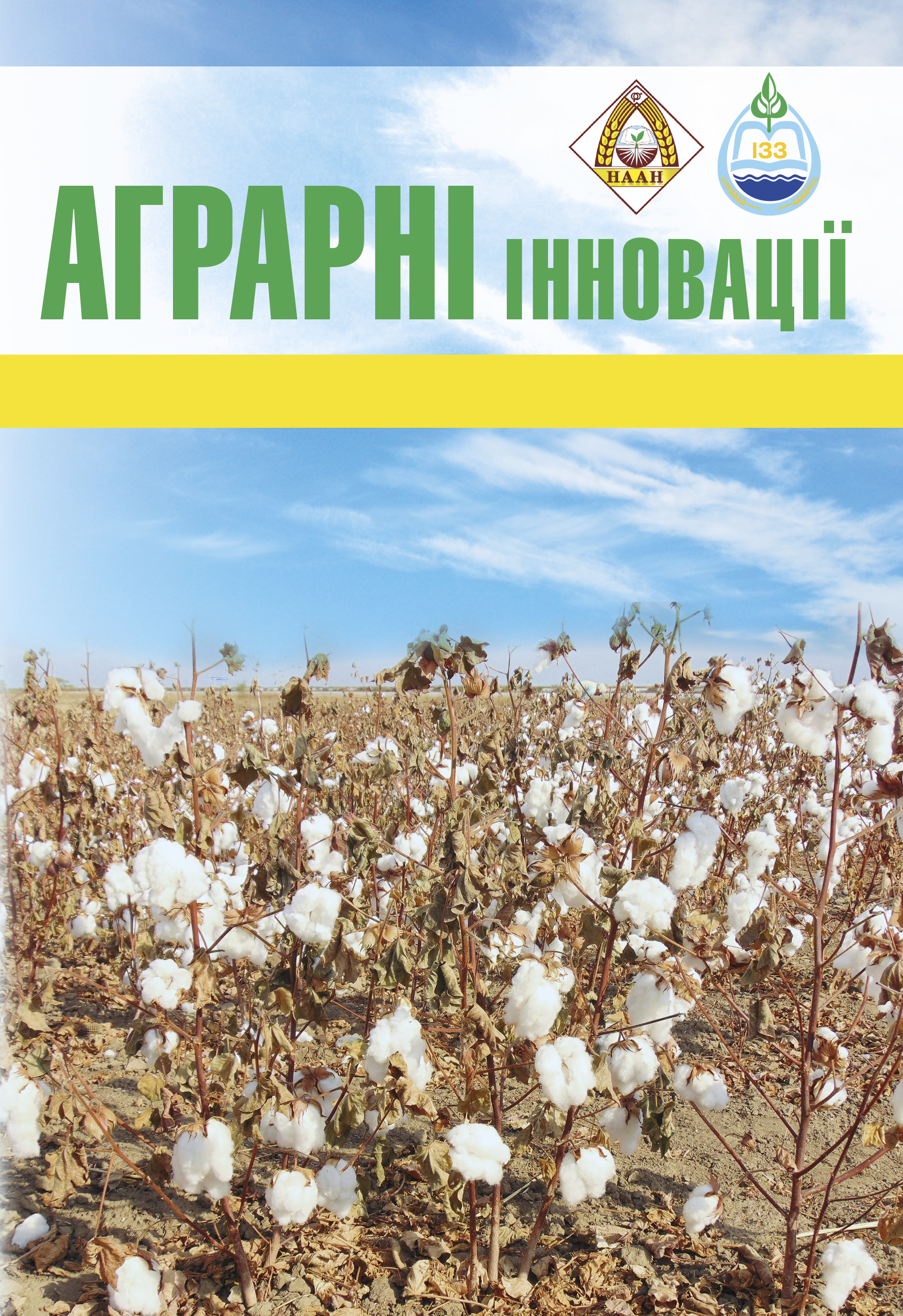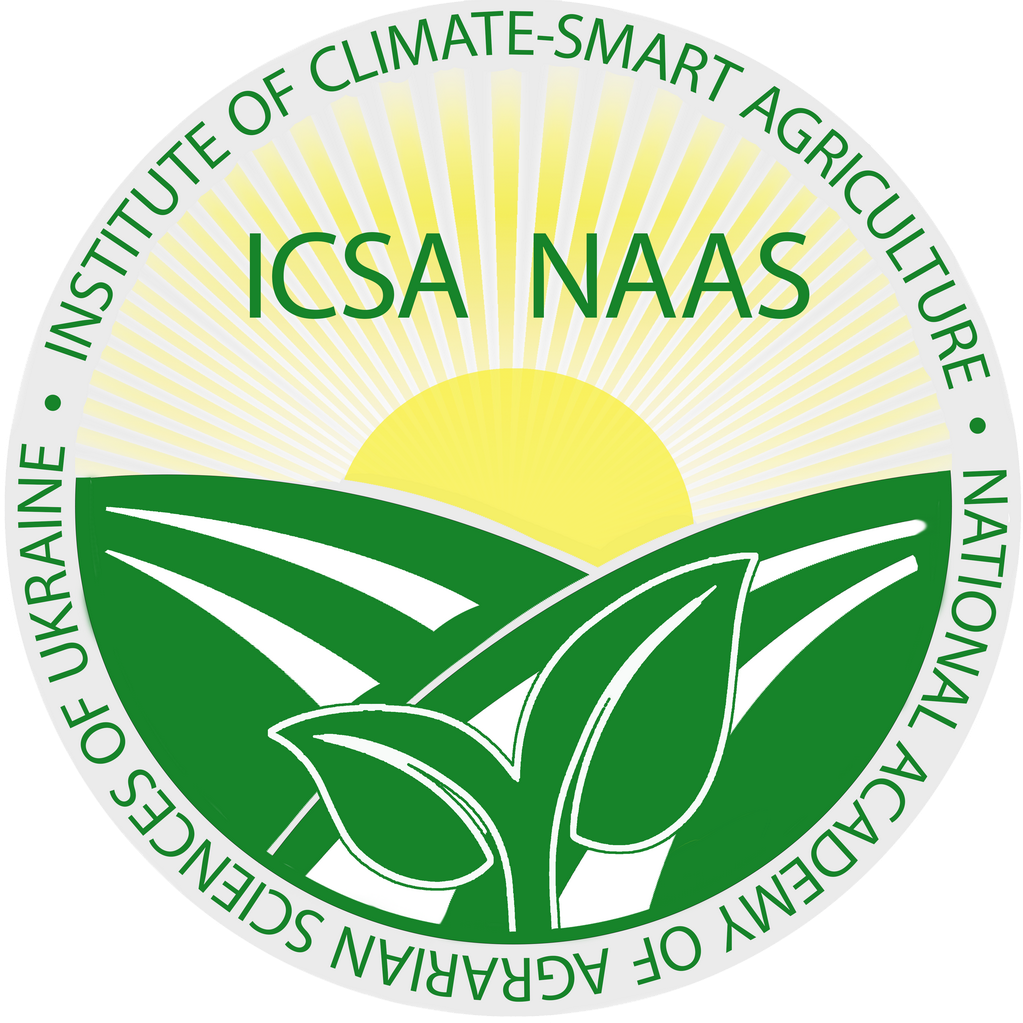The effectiveness of protection measures for maize hybrids of different FAO groups by Fusarium moniliforme Sheldon under continuous maize cultivation conditions with irrigation
Abstract
The article presents the results of studies on the degree of infection of maize hybrids of different FAO groups with Fusarium head blight (Fusarium moniliforme Sheldon) in permanent crops for five years. The purpose of the research was to determine the effectiveness of the use of chemical and biological means of protecting maize hybrids of different FAO groups from Fusarium head blight (Fusarium moniliforme Sheldon) under drip irrigation conditions in permanent maize crops during 2020…2024. Methods. Field experiments were con- ducted at the Institute of Climate-Oriented Agriculture of the NAAS in the agroecological zone of the Southern Steppe of Ukraine. Results. According to the results of the research, it was found that during permanent maize crops, damage to maize hybrid plants by Fusarium head blight in the 4th–5th year increased significantly com- pared to the first years. In the last two years of a five- year permanent crop, the degree of infection of hybrids increased by 33.3…44.25%. Hybrids with FAO over 300 were more affected, which is associated with the longer duration of the growing season of these genotypes and the increased duration of invasive pressure on plants.Without the use of plant protection products, the incidence of Fusarium moniliforme Sheldon significantly increased by the fifth year of constant crops. Thus, if at the beginning of the two-year period of repeated crops, the incidence of hybrid plant ears was 22.6...34.5% in the FAO 190...290 group, then in the last two years of the five-year constant crop, the degree of infection of these hybrids was 60.1...73.0%. The intensity of damage to ears by Fusarium wilt in hybrids with FAO 320...420 increased more rapidly in constant crops compared to early-ripening genotypes. Thus, in the first two years of constant crops, the incidence of Fusarium moniliforme Sheldon in hybrids of this maturity group was 38.3...48.4%. At the end of the five-year period, the incidence of hybrids Askania, Tronka, Arabat, Vira increased to 70.2…91.6%.The incidence of late-ripening hybrids increased almost twice, which indicates a greater sensitivity to damage by Fusarium head blight. The use of a biological product for corn protection showed the effectiveness of the drug Trichopsin BT (biological preparations of insecticidal and growth-stimulating action) in the fight against Fusarium moniliforme Sheldon. Conclusions. The use of integrated plant protection (chemical insecticide + biological preparation + chemical fungicide) showed the greatest technical efficiency in the fight against Fusarium head blight. The technical efficiency of such protection of maize heads from Fusarium moniliforme Sheldon was the greatest and amounted to 82…94%.
References
2. Ващенко І.В. Теоретичні засади та сучасний стан розвитку ринку кукурудзи. Економіка АПК. 2017. № 2. С. 88–92.
3. Wang W., Wang B., Sun X. et al. Symptoms and pathogens diversity of Corn Fusarium sheath rot in Sichuan Province, China. Scientific Reports. 2021. №11. Р. 2835. https://doi.org/10.1038/s41598-021-82463-2
4. Лікар Я.О., Гадзало Я.М., Вожегова Р.А. Енергетичний аналіз технології вирощування кукурудзи залежно від різних схем захисту рослин. Таврійський науковий вісник. 2024. № 141(1). С. 164–172. https://doi.org/10.32782/2226-0099.2024.141.1.21.
5. Кохан А.В., Глущенко Л.Д., Лень О.І., Олепір Р.В., Самойленко О.А. Продуктивність сортів і гібридів кукурудзи за різних систем удобрення та беззмінного їх вирощування. Вісник аграрної науки. 2019. №10(799). С. 18–23. https://doi.org/20.31073/agrovisnyk2019010-03.
6. Чоні С. Фузаріоз кукурудзи: шкодочинність та особливості розвитку. Агроном. 05.12.2021. https://www.agronom.com.ua/fuzarioz-kukurudzy-shkodochynnist- ta-osoblyvosti-rozvytku/
7. Руда М.Є., Васянович О.М., Сапейко В.М., Янголь Ю.А., Левченко З.А., Камінська О.В. Випадок фузаріотоксикозу серед свиней. Ветеринарна біотехнологія. 2019. № 35. С.129–134. https://doi.org/10.31073/vet_biotech35-15.
8. Швартау В.В., Зозуля О.Л., Михальська Л.М., Санін О.Ю. Фузаріоз культурних рослин. Київ: Логос. 2016. 164 с.
9. Несмачна М. Від 5 до 10% обстежених рос- лин кукурудзи уражено фузаріозом качанів – Держпродспоживслужба. SuperAgronom. com. 11 серпня 2024. https://superagronom.com/news/19377-vid-5-do-10-obstejenih-roslin-kukurudzi-urajeno-fuzariozom-kachaniv-derjprodspojivslujba
10. Борзих О.І. Хвороби рослин основних польових культур. Біоресурси і природокористування. 2015. Вип. 7. С. 183–189.
11. Стригун О., Ляска Ю. Бавовникова совка на посівах кукурудзи. Пропозиція. 19 липня 2021. https://propozitsiya.com/articles/tekhnolohiyi-vyroshchuvannya/bavovnykova-sovka-na-posivakh-kukurudzy.
12. Алєксєєва С. А., Лікар С. П. Вплив стеблового кукурудзяного метелика на розвиток фузаріозу качана. Карантин і захист рослин. 2017. № 10–12. С.21–24.
13. https://superagronom.com/hvorobi-grib/fuzarioz-kachaniv-kukurudzi-id16448
14. Мостов’як І.І., Дем’янюк О.С., Парфенюк А.І., Безноско І.В. Сорт як фактор формування стійких агроценозів зернових культур. Вісник полтавської державної аграрної академії. 2020. № 2. С.110–118. doi: 10.31210/visnyk2020.02.13.
15. Gadzalo Ia., Luzan Yu. Increasing the role of agricultural science at the stage of European integration. Bulletin of Agricultural Science. 2023. №12(849). Р.5–16. https://doi.org/10.31073/agrovisnyk202312-01.
16. Дробітько А.В., Терещенко А.В. Вплив технології вирощування на розвиток хвороб гібридів кукурудзи в умовах Північного Степу України. Аграрні інновації. 2024. № 27. С.189–195. https://doi.org/10.32848/agrar.innov.2024.27.29.
17. Donets A., Marchenko T., Piliarska O., Mishchenko S., Lavrynenko Y. The effectiveness of protection measures for maize hybrids of different FAO groups against damage caused by Ostrinia nubilalis Hübner under continuous maize cultivation conditions with irrigation. Modern Phytomorphology. 2025. Vol. 19. P.91–95. DOI: 10.5281/zenodo.200121 (10.5281/zenodo.2025-19).
18. Шинкарук Л.М. Технічна ефективність застосування фунгіцидів за вирощування кукурудзи. Карантин і захист рослин. 2022. № 1(268). С.17–20. https://doi.org/10.36495/2312-0614.2022.1.17-20.
19. Vozhehova R., Marchenko T., Piliarska O., Lavrynenko Yu., Halchenko N., Lykhovyd P. Grain corn product yield and gross value depending on the hybrids and application of biopreparations in the irrigated conditions. Scientific Papers Series Management, Economic Engineering in Agriculture and Rural Development. 2021. Vol. 21, Issue 4. P.611–619. https://managementjournal.usamv.ro/pdf/vol.21_4/volume_21_4_2021.
20. Третяк Ю. Ад'юванти і біостимулятори мінімізують негативні фактори у ході вегетації, на які ми не можемо вплинути. https://superagronom.com/articles/788-yuriy-tretyak-adyuvanti-i-biostimulyatori-minimizuyut-negativni-faktori-u-hodi-vegetatsiyi-na-yaki-mi-ne-mojemo-vplinuti (дата звернення 5 червня 2025)
21. Вожегова Р.А. та ін. Методика польових і лабораторних досліджень на зрошуваних землях. Херсон: Грінь Д.С. 2014. 286 с.
22. Trybel S.O., Sigaryova D.D., Sekun M.P., Ivashchenko O.O. Test methods and application of pesticides. Kyiv: The world. 2001. 256 с.
23. Інженерно-технологічний інститут «Біотехніка» НААН URL: https://biotekhnika.od.ua/uk,https://centrbio.com/

This work is licensed under a Creative Commons Attribution 4.0 International License.






